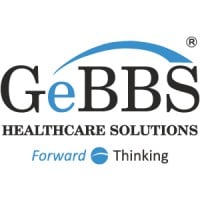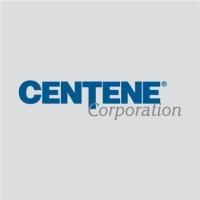
Acibadem Healthcare Group Company Cyber Security Posture
acibadem.com.trThe Acıbadem Healthcare Group is Turkey’s most valuable private healthcare organisation according to brand assessment results and the position the group has achieved in the sector. Today Acıbadem, with its 24 hospitals, 18 outpatient clinics, 3.500 doctors and 4.000 nurses, provides healthcare services with nearly 22.500 employees. The Group provides diagnosis and treatment services at certified healthcare standards with a qualified staff, advanced technology, modern infrastructure and JCI accreditation. The journey of growth and development for Acıbadem, which started out as a district hospital in 1991, continues on the world stage with an agreement made in 2012 with IHH Healthcare Berhad, one of the largest groups in the Far East. IHH Healthcare Berhad, which has education and real estate investments in many countries throughout the world in addition to investments in hospitals and healthcare institutions in 8 large countries of the Asian Pacific, is the 2nd largest healthcare chain in the world with a powerful structure comprised of the Malaysian government’s investment fund Khazanah, Japan’s Mitsui & Co. Ltd. and the Aydınlar Family Partnership. In 2016, Acıbadem Healthcare Group acquired the Tokuda Group and the City Clinic Group, both of which are leading Bulgarian healthcare providers. An investment of 125 million Euros enabled Acıbadem to expand its operations by 4 hospitals and 5 outpatient clinics thus making it the largest private healthcare provider in Bulgaria. Acıbadem currently operates 24 hospitals and 18 clinics in 5 countries. The Acıbadem Healthcare Group, provides integrated premium healthcare services with Acıbadem Project Management (Hospital Design, Project Management), APlus (Hospital Hospitality Company), Labmed (Advanced Clinical Lab Company) and Acıbadem Mobile (Mobile Healthcare Services, such as Air & Groud Ambulance).
AHG Company Details
acibadem-healthcare-group
10,001+ employees
92080
62
Hospitals and Health Care
acibadem.com.tr
15
ACI_1946910
In-progress
Between 800 and 900
This score is AI-generated and less favored by cyber insurers, who prefer the TPRM score.
 AHG Global Score
AHG Global Score.png)

Acibadem Healthcare Group Company Scoring based on AI Models
| Model Name | Date | Description | Current Score Difference | Score |
|---|---|---|---|---|
| AVERAGE-Industry | 03-12-2025 | This score represents the average cybersecurity rating of companies already scanned within the same industry. It provides a benchmark to compare an individual company's security posture against its industry peers. | N/A | Between 800 and 900 |
Acibadem Healthcare Group Company Cyber Security News & History
| Entity | Type | Severity | Impact | Seen | Url ID | Details | View |
|---|
Acibadem Healthcare Group Company Subsidiaries

The Acıbadem Healthcare Group is Turkey’s most valuable private healthcare organisation according to brand assessment results and the position the group has achieved in the sector. Today Acıbadem, with its 24 hospitals, 18 outpatient clinics, 3.500 doctors and 4.000 nurses, provides healthcare services with nearly 22.500 employees. The Group provides diagnosis and treatment services at certified healthcare standards with a qualified staff, advanced technology, modern infrastructure and JCI accreditation. The journey of growth and development for Acıbadem, which started out as a district hospital in 1991, continues on the world stage with an agreement made in 2012 with IHH Healthcare Berhad, one of the largest groups in the Far East. IHH Healthcare Berhad, which has education and real estate investments in many countries throughout the world in addition to investments in hospitals and healthcare institutions in 8 large countries of the Asian Pacific, is the 2nd largest healthcare chain in the world with a powerful structure comprised of the Malaysian government’s investment fund Khazanah, Japan’s Mitsui & Co. Ltd. and the Aydınlar Family Partnership. In 2016, Acıbadem Healthcare Group acquired the Tokuda Group and the City Clinic Group, both of which are leading Bulgarian healthcare providers. An investment of 125 million Euros enabled Acıbadem to expand its operations by 4 hospitals and 5 outpatient clinics thus making it the largest private healthcare provider in Bulgaria. Acıbadem currently operates 24 hospitals and 18 clinics in 5 countries. The Acıbadem Healthcare Group, provides integrated premium healthcare services with Acıbadem Project Management (Hospital Design, Project Management), APlus (Hospital Hospitality Company), Labmed (Advanced Clinical Lab Company) and Acıbadem Mobile (Mobile Healthcare Services, such as Air & Groud Ambulance).
Access Data Using Our API

Get company history
.png)
AHG Cyber Security News
Acibadem Enters Into Serbia as Part of Its Growth Strategy For Eastern European Market
The Newest one of the 5 Medical Health Centers. The Newest one of the 5 Medical Health Centers. Executes definitive agreements to acquire ...
Awareness and level of digital literacy among students receiving health-based education
Our aim in this study is to determine the digital literacy level and awareness of our students receiving health-based education in our university.

AHG Similar Companies

Cedars-Sinai
Since its beginning in 1902, Cedars-Sinai has evolved to meet the healthcare needs of one of the most diverse regions in the nation, continually setting new standards for quality and innovation in patient care, research, teaching and community service. Today, Cedars-Sinai is widely known for its na

Baptist Health
Baptist Health South Florida has been named a 2024 Fortune 100 Best Companies to Work For once again! This is the 24th year in a row on this extraordinary list. We have also been recognized for being among the best healthcare providers in the nation by U.S. News and World Report in its 2023-2024 Bes

GeBBS Healthcare Solutions
GeBBS Healthcare Solutions is a KLAS rated leading provider of Revenue Cycle Management (RCM) services and Risk Adjustment solutions. GeBBS’ innovative technology, combined with over 14,000-strong global workforce, helps clients improve financial performance, adhere to compliance, and enhance the

NYC Health + Hospitals
NYC Health + Hospitals is the nation’s largest public health care delivery system. We are an integrated network of hospitals, trauma centers, neighborhood health centers, nursing homes, and post-acute care centers. We are a home care agency and a health plan, MetroPlus. The health system provides es

University Hospitals Bristol and Weston NHS Foundation Trust
We are University Hospitals Bristol and Weston NHS Foundation Trust (UHBW). One of the largest acute Trusts in the country, bringing together a combined workforce of over 13,000 staff and over 100 different clinical services across 10 different sites, serving a core population of more than 500,000 p

Centene Corporation
Centene Corporation is a leading healthcare enterprise committed to helping people live healthier lives. Centene offers affordable and high-quality products to more than 1 in 15 individuals across the nation, including Medicaid and Medicare members (including Medicare Prescription Drug Plans) as wel

Frequently Asked Questions (FAQ) on Cybersecurity Incidents
AHG CyberSecurity History Information
Total Incidents: According to Rankiteo, AHG has faced 0 incidents in the past.
Incident Types: As of the current reporting period, AHG has not encountered any cybersecurity incidents.
Total Financial Loss: The total financial loss from these incidents is estimated to be {total_financial_loss}.
Cybersecurity Posture: The company's overall cybersecurity posture is described as The Acıbadem Healthcare Group is Turkey’s most valuable private healthcare organisation according to brand assessment results and the position the group has achieved in the sector. Today Acıbadem, with its 24 hospitals, 18 outpatient clinics, 3.500 doctors and 4.000 nurses, provides healthcare services with nearly 22.500 employees. The Group provides diagnosis and treatment services at certified healthcare standards with a qualified staff, advanced technology, modern infrastructure and JCI accreditation. The journey of growth and development for Acıbadem, which started out as a district hospital in 1991, continues on the world stage with an agreement made in 2012 with IHH Healthcare Berhad, one of the largest groups in the Far East. IHH Healthcare Berhad, which has education and real estate investments in many countries throughout the world in addition to investments in hospitals and healthcare institutions in 8 large countries of the Asian Pacific, is the 2nd largest healthcare chain in the world with a powerful structure comprised of the Malaysian government’s investment fund Khazanah, Japan’s Mitsui & Co. Ltd. and the Aydınlar Family Partnership. In 2016, Acıbadem Healthcare Group acquired the Tokuda Group and the City Clinic Group, both of which are leading Bulgarian healthcare providers. An investment of 125 million Euros enabled Acıbadem to expand its operations by 4 hospitals and 5 outpatient clinics thus making it the largest private healthcare provider in Bulgaria. Acıbadem currently operates 24 hospitals and 18 clinics in 5 countries. The Acıbadem Healthcare Group, provides integrated premium healthcare services with Acıbadem Project Management (Hospital Design, Project Management), APlus (Hospital Hospitality Company), Labmed (Advanced Clinical Lab Company) and Acıbadem Mobile (Mobile Healthcare Services, such as Air & Groud Ambulance)..
Detection and Response: The company detects and responds to cybersecurity incidents through {description_of_detection_and_response_process}.
Incident Details
Incident 1: Ransomware Attack
Title: {Incident_Title}
Description: {Brief_description_of_the_incident}
Date Detected: {Detection_Date}
Date Publicly Disclosed: {Disclosure_Date}
Date Resolved: {Resolution_Date}
Type: {Type_of_Attack}
Attack Vector: {Attack_Vector}
Vulnerability Exploited: {Vulnerability}
Threat Actor: {Threat_Actor}
Motivation: {Motivation}
Incident 2: Data Breach
Title: {Incident_Title}
Description: {Brief_description_of_the_incident}
Date Detected: {Detection_Date}
Date Publicly Disclosed: {Disclosure_Date}
Date Resolved: {Resolution_Date}
Type: {Type_of_Attack}
Attack Vector: {Attack_Vector}
Vulnerability Exploited: {Vulnerability}
Threat Actor: {Threat_Actor}
Motivation: {Motivation}
Common Attack Types: As of now, the company has not encountered any reported incidents involving common cyberattacks.
Identification of Attack Vectors: The company identifies the attack vectors used in incidents through {description_of_identification_process}.
Impact of the Incidents
Incident 1: Ransomware Attack
Financial Loss: {Financial_Loss}
Data Compromised: {Data_Compromised}
Systems Affected: {Systems_Affected}
Downtime: {Downtime}
Operational Impact: {Operational_Impact}
Conversion Rate Impact: {Conversion_Rate_Impact}
Revenue Loss: {Revenue_Loss}
Customer Complaints: {Customer_Complaints}
Brand Reputation Impact: {Brand_Reputation_Impact}
Legal Liabilities: {Legal_Liabilities}
Identity Theft Risk: {Identity_Theft_Risk}
Payment Information Risk: {Payment_Information_Risk}
Incident 2: Data Breach
Financial Loss: {Financial_Loss}
Data Compromised: {Data_Compromised}
Systems Affected: {Systems_Affected}
Downtime: {Downtime}
Operational Impact: {Operational_Impact}
Conversion Rate Impact: {Conversion_Rate_Impact}
Revenue Loss: {Revenue_Loss}
Customer Complaints: {Customer_Complaints}
Brand Reputation Impact: {Brand_Reputation_Impact}
Legal Liabilities: {Legal_Liabilities}
Identity Theft Risk: {Identity_Theft_Risk}
Payment Information Risk: {Payment_Information_Risk}
Average Financial Loss: The average financial loss per incident is {average_financial_loss}.
Commonly Compromised Data Types: The types of data most commonly compromised in incidents are {list_of_commonly_compromised_data_types}.
Incident 1: Ransomware Attack
Entity Name: {Entity_Name}
Entity Type: {Entity_Type}
Industry: {Industry}
Location: {Location}
Size: {Size}
Customers Affected: {Customers_Affected}
Incident 2: Data Breach
Entity Name: {Entity_Name}
Entity Type: {Entity_Type}
Industry: {Industry}
Location: {Location}
Size: {Size}
Customers Affected: {Customers_Affected}
Response to the Incidents
Incident 1: Ransomware Attack
Incident Response Plan Activated: {Yes/No}
Third Party Assistance: {Yes/No}
Law Enforcement Notified: {Yes/No}
Containment Measures: {Containment_Measures}
Remediation Measures: {Remediation_Measures}
Recovery Measures: {Recovery_Measures}
Communication Strategy: {Communication_Strategy}
Adaptive Behavioral WAF: {Adaptive_Behavioral_WAF}
On-Demand Scrubbing Services: {On_Demand_Scrubbing_Services}
Network Segmentation: {Network_Segmentation}
Enhanced Monitoring: {Enhanced_Monitoring}
Incident 2: Data Breach
Incident Response Plan Activated: {Yes/No}
Third Party Assistance: {Yes/No}
Law Enforcement Notified: {Yes/No}
Containment Measures: {Containment_Measures}
Remediation Measures: {Remediation_Measures}
Recovery Measures: {Recovery_Measures}
Communication Strategy: {Communication_Strategy}
Adaptive Behavioral WAF: {Adaptive_Behavioral_WAF}
On-Demand Scrubbing Services: {On_Demand_Scrubbing_Services}
Network Segmentation: {Network_Segmentation}
Enhanced Monitoring: {Enhanced_Monitoring}
Incident Response Plan: The company's incident response plan is described as {description_of_incident_response_plan}.
Third-Party Assistance: The company involves third-party assistance in incident response through {description_of_third_party_involvement}.
Data Breach Information
Incident 2: Data Breach
Type of Data Compromised: {Type_of_Data}
Number of Records Exposed: {Number_of_Records}
Sensitivity of Data: {Sensitivity_of_Data}
Data Exfiltration: {Yes/No}
Data Encryption: {Yes/No}
File Types Exposed: {File_Types}
Personally Identifiable Information: {Yes/No}
Prevention of Data Exfiltration: The company takes the following measures to prevent data exfiltration: {description_of_prevention_measures}.
Handling of PII Incidents: The company handles incidents involving personally identifiable information (PII) through {description_of_handling_process}.
Ransomware Information
Incident 1: Ransomware Attack
Ransom Demanded: {Ransom_Amount}
Ransom Paid: {Ransom_Paid}
Ransomware Strain: {Ransomware_Strain}
Data Encryption: {Yes/No}
Data Exfiltration: {Yes/No}
Ransom Payment Policy: The company's policy on paying ransoms in ransomware incidents is described as {description_of_ransom_payment_policy}.
Data Recovery from Ransomware: The company recovers data encrypted by ransomware through {description_of_data_recovery_process}.
Regulatory Compliance
Incident 1: Ransomware Attack
Regulations Violated: {Regulations_Violated}
Fines Imposed: {Fines_Imposed}
Legal Actions: {Legal_Actions}
Regulatory Notifications: {Regulatory_Notifications}
Incident 2: Data Breach
Regulations Violated: {Regulations_Violated}
Fines Imposed: {Fines_Imposed}
Legal Actions: {Legal_Actions}
Regulatory Notifications: {Regulatory_Notifications}
Regulatory Frameworks: The company complies with the following regulatory frameworks regarding cybersecurity: {list_of_regulatory_frameworks}.
Ensuring Regulatory Compliance: The company ensures compliance with regulatory requirements through {description_of_compliance_measures}.
Lessons Learned and Recommendations
Incident 1: Ransomware Attack
Lessons Learned: {Lessons_Learned}
Incident 2: Data Breach
Lessons Learned: {Lessons_Learned}
Incident 1: Ransomware Attack
Recommendations: {Recommendations}
Incident 2: Data Breach
Recommendations: {Recommendations}
Key Lessons Learned: The key lessons learned from past incidents are {list_of_key_lessons_learned}.
Implemented Recommendations: The company has implemented the following recommendations to improve cybersecurity: {list_of_implemented_recommendations}.
References
Additional Resources: Stakeholders can find additional resources on cybersecurity best practices at {list_of_additional_resources}.
Investigation Status
Incident 1: Ransomware Attack
Investigation Status: {Investigation_Status}
Incident 2: Data Breach
Investigation Status: {Investigation_Status}
Communication of Investigation Status: The company communicates the status of incident investigations to stakeholders through {description_of_communication_process}.
Stakeholder and Customer Advisories
Incident 1: Ransomware Attack
Stakeholder Advisories: {Stakeholder_Advisories}
Customer Advisories: {Customer_Advisories}
Incident 2: Data Breach
Stakeholder Advisories: {Stakeholder_Advisories}
Customer Advisories: {Customer_Advisories}
Advisories Provided: The company provides the following advisories to stakeholders and customers following an incident: {description_of_advisories_provided}.
Initial Access Broker
Incident 1: Ransomware Attack
Entry Point: {Entry_Point}
Reconnaissance Period: {Reconnaissance_Period}
Backdoors Established: {Backdoors_Established}
High Value Targets: {High_Value_Targets}
Data Sold on Dark Web: {Yes/No}
Incident 2: Data Breach
Entry Point: {Entry_Point}
Reconnaissance Period: {Reconnaissance_Period}
Backdoors Established: {Backdoors_Established}
High Value Targets: {High_Value_Targets}
Data Sold on Dark Web: {Yes/No}
Monitoring and Mitigation of Initial Access Brokers: The company monitors and mitigates the activities of initial access brokers through {description_of_monitoring_and_mitigation_measures}.
Post-Incident Analysis
Incident 1: Ransomware Attack
Root Causes: {Root_Causes}
Corrective Actions: {Corrective_Actions}
Incident 2: Data Breach
Root Causes: {Root_Causes}
Corrective Actions: {Corrective_Actions}
Post-Incident Analysis Process: The company's process for conducting post-incident analysis is described as {description_of_post_incident_analysis_process}.
Corrective Actions Taken: The company has taken the following corrective actions based on post-incident analysis: {list_of_corrective_actions_taken}.
Additional Questions
General Information
Ransom Payment History: The company has {paid/not_paid} ransoms in the past.
Last Ransom Demanded: The amount of the last ransom demanded was {last_ransom_amount}.
Last Attacking Group: The attacking group in the last incident was {last_attacking_group}.
Incident Details
Most Recent Incident Detected: The most recent incident detected was on {most_recent_incident_detected_date}.
Most Recent Incident Publicly Disclosed: The most recent incident publicly disclosed was on {most_recent_incident_publicly_disclosed_date}.
Most Recent Incident Resolved: The most recent incident resolved was on {most_recent_incident_resolved_date}.
Impact of the Incidents
Highest Financial Loss: The highest financial loss from an incident was {highest_financial_loss}.
Most Significant Data Compromised: The most significant data compromised in an incident was {most_significant_data_compromised}.
Most Significant System Affected: The most significant system affected in an incident was {most_significant_system_affected}.
Response to the Incidents
Third-Party Assistance in Most Recent Incident: The third-party assistance involved in the most recent incident was {third_party_assistance_in_most_recent_incident}.
Containment Measures in Most Recent Incident: The containment measures taken in the most recent incident were {containment_measures_in_most_recent_incident}.
Data Breach Information
Most Sensitive Data Compromised: The most sensitive data compromised in a breach was {most_sensitive_data_compromised}.
Number of Records Exposed: The number of records exposed in the most significant breach was {number_of_records_exposed}.
Ransomware Information
Highest Ransom Demanded: The highest ransom demanded in a ransomware incident was {highest_ransom_demanded}.
Highest Ransom Paid: The highest ransom paid in a ransomware incident was {highest_ransom_paid}.
Regulatory Compliance
Highest Fine Imposed: The highest fine imposed for a regulatory violation was {highest_fine_imposed}.
Most Significant Legal Action: The most significant legal action taken for a regulatory violation was {most_significant_legal_action}.
Lessons Learned and Recommendations
Most Significant Lesson Learned: The most significant lesson learned from past incidents was {most_significant_lesson_learned}.
Most Significant Recommendation Implemented: The most significant recommendation implemented to improve cybersecurity was {most_significant_recommendation_implemented}.
References
Most Recent Source: The most recent source of information about an incident is {most_recent_source}.
Most Recent URL for Additional Resources: The most recent URL for additional resources on cybersecurity best practices is {most_recent_url}.
Investigation Status
Current Status of Most Recent Investigation: The current status of the most recent investigation is {current_status_of_most_recent_investigation}.
Stakeholder and Customer Advisories
Most Recent Stakeholder Advisory: The most recent stakeholder advisory issued was {most_recent_stakeholder_advisory}.
Most Recent Customer Advisory: The most recent customer advisory issued was {most_recent_customer_advisory}.
Initial Access Broker
Most Recent Entry Point: The most recent entry point used by an initial access broker was {most_recent_entry_point}.
Most Recent Reconnaissance Period: The most recent reconnaissance period for an incident was {most_recent_reconnaissance_period}.
Post-Incident Analysis
Most Significant Root Cause: The most significant root cause identified in post-incident analysis was {most_significant_root_cause}.
Most Significant Corrective Action: The most significant corrective action taken based on post-incident analysis was {most_significant_corrective_action}.
What Do We Measure?
















Every week, Rankiteo analyzes billions of signals to give organizations a sharper, faster view of emerging risks. With deeper, more actionable intelligence at their fingertips, security teams can outpace threat actors, respond instantly to Zero-Day attacks, and dramatically shrink their risk exposure window.
These are some of the factors we use to calculate the overall score:
Identify exposed access points, detect misconfigured SSL certificates, and uncover vulnerabilities across the network infrastructure.
Gain visibility into the software components used within an organization to detect vulnerabilities, manage risk, and ensure supply chain security.
Monitor and manage all IT assets and their configurations to ensure accurate, real-time visibility across the company's technology environment.
Leverage real-time insights on active threats, malware campaigns, and emerging vulnerabilities to proactively defend against evolving cyberattacks.




